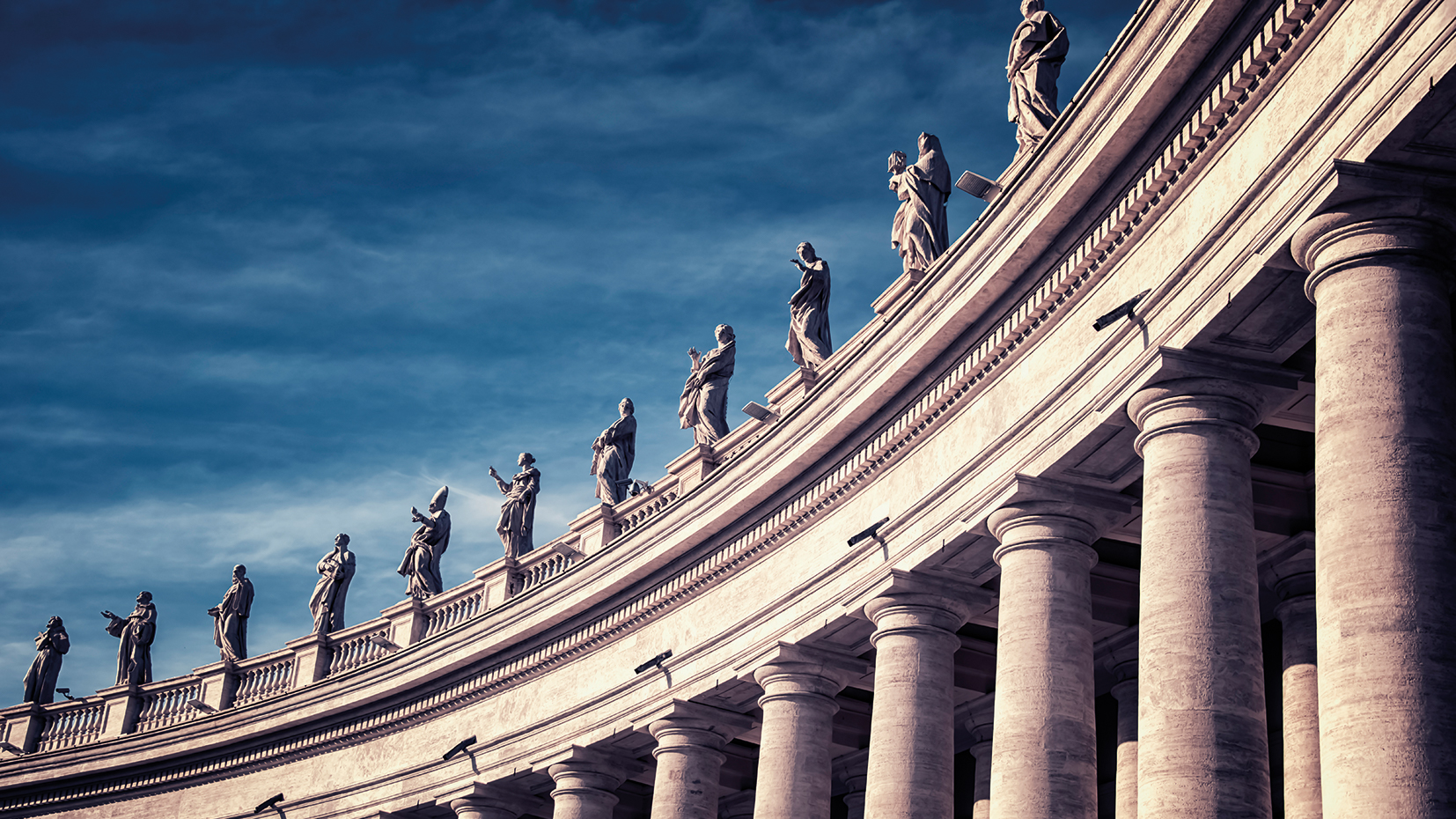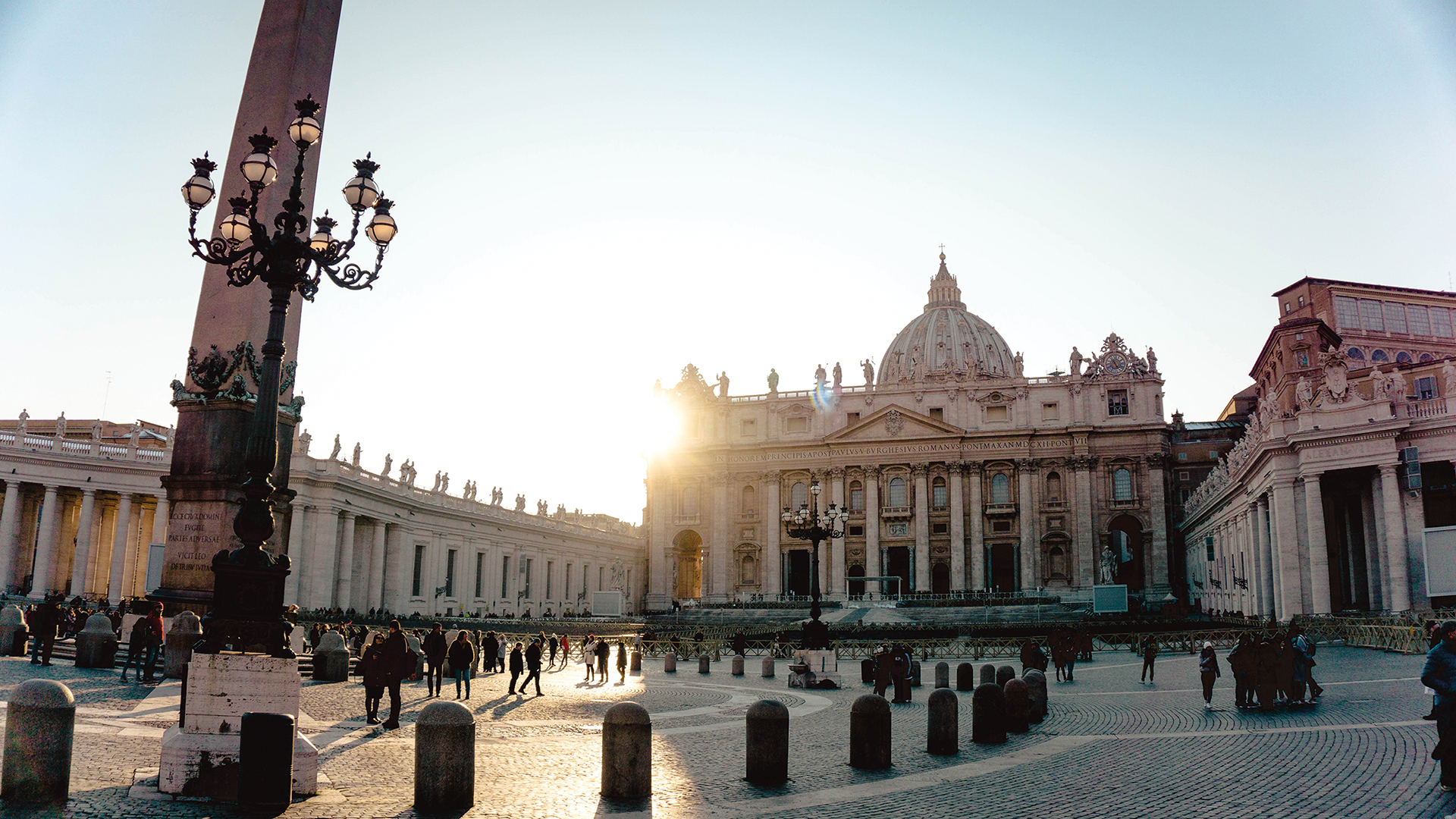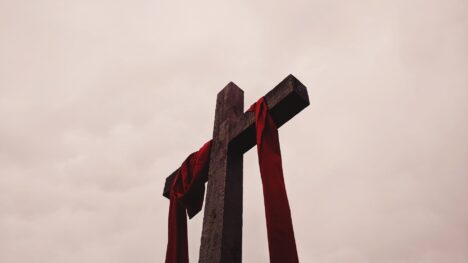
In the late 1790s, Napoleon Bonaparte had Pope Pius VI taken prisoner and announced to the world that the papacy was abolished—there never would be a future pope. For centuries the papacy had been a sovereign government in central Italy and along the Adriatic coast. Bonaparte confiscated this territory and constituted the city of Rome and a little land around it a republic, free of popes and other monarchs. These events cancelled the effect of several centuries during which the popes controlled Europe and its colonies, both spiritually and politically, with civil governments enforcing papal dictates.
But, after Napoleon’s fall, the papacy not only rebounded but gradually grew in power and influence until our own day. Paul Collins’s book outlines how this happened and makes the title’s ambitious claim: Absolute Power: How the Pope Became the Most Influential Man in the World. Recent popes, says Collins, have been more significant than ever. While noting the contrast between the humble, poor, and meek Jesus on the cross, Collins shows how the papacy has become one of the most influential institutions on earth, using its power to influence secular leaders, for instance, intervening to stave off nuclear war during the 1962 Cuban missile crisis.
Absolute Power is not a history of how the Roman Catholic Church as a whole became powerful; instead it describes how a single category of its senior officers rose to unprecedented authority inside the Church.
After centuries of sectarian tension, many Protestant churches have backed away from their early strident claims that the religio-political Roman Catholic power is represented in Bible prophecy as an unholy, blaspheming beast. Even churches who still hold to this interpretation, such as the Seventh-day Adventist Church (publishers of this magazine) rush to point out that these prophecies do not apply to faithful, everyday Catholics, but only the corruptions in the papal system. What’s surprising then, is that, although he is a Roman Catholic and a former priest, Paul Collins’s Absolute Power appears to parallel the Adventist interpretation of Revelation 13:3: “One of the heads of the beast seemed to have had a fatal wound, but the fatal wound had been healed. The whole world was filled with wonder and followed the beast.”
One of the founders of the Adventist Church, Ellen White, wrote in 1858 that this beast represented papal Rome and “the fatal wound” was the near-extinction of the papacy in the wake of the French Revolution, which had occurred within living memory of people still alive in her day. White predicted that the “healing” of Revelation’s prophecy would be the papacy’s return to authority and glory in the following centuries. In striking parallel with this prediction, Absolute Power carefully documents the reign of each pope and his contribution to the restoration of papal power and influence. Did Collins write with Bible prophecy in mind? He makes no direct reference in the book, but during an interview on ABC’s Radio National, his language echoed Revelation’s: “The papacy had reached rock bottom with Pius VI in 1799. Pius VII sees the beginning of the growth of what is the modern papacy. And in some ways it’s quite a different beast from the papacy that went before it.”
One of Collins’ concerns is the erosion of democracy within the Church. The average Catholic is actually less self-directed today than in the 1790s. The bishops, likewise, have lost a measure of autonomy. It is only the position of pope that has gained from the healing of the wound, for the popes accumulated their new authority by steadily reducing others’ rights and influence within the Church. In fact, bishops in the early days were elected by members of their diocese or sometimes by a secular ruler, but since 1917 all bishops have been appointed from Rome, which also maintains the right to dismiss them at any time. As the supreme religious leader of more than a billion people, today’s pope can wield unprecedented influence in the world. Although they were sincere attempts to remedy previous abuses in structure and practice, all “reforms” in the administration of the Church resulted in the office of pope gaining more control over the years. The Second Vatican Council (1962–65) enacted other reforms to give more voice to other Roman Catholics—especially bishops—but many of these changes have been either ignored or manipulated to support the papal status quo.

Other reasons for papal revival include the work of the many religious orders of priests, friars, nuns, and even laypeople authorised by Rome, who colonised unconverted lands to Catholicism. Instead of being administered by local bishops or the world headquarters of the relevant religious orders, new missionary work came directly under the papacy. The reason given was that these foreign lands were too big for local leaders to manage. Among such papal-directed mission fields were the whole of the United States, the United Kingdom, and Collins’ home country, Australia.
During the modern period, Rome began to closely supervise Roman Catholic education, publishing, preaching, and even thought. It revived the Italian Inquisition and instituted church censorship. From time to time modern popes forbade particular shades of doctrine or practice within the church, and zealously persecuted scholars and other churchmen who favoured them—Collins himself resigned from the priesthood after his 1997 book, Papal Power, provoked the ire of the Vatican. These heavy-handed tactics have rendered many Catholics, including bishops, more cautious about thinking in any manner except as specifically authorised by the Vatican. Little can be done now without the wishes of the pope.
Since the 1870s, most popes excelled at public relations. Pius IX (reigned 1846 to 1878) increased the number of papal “audiences” and opened them to the common people, expressing a desire to develop a rapport and show concern for them. Pius XII (died 1958) and later popes used film documentaries, radio, and television to the full to project the papal image throughout the world. One effect of television is that the focus and attention is always on a single person; for Vatican broadcasts, that person is always the Pope.

Beginning in 1964, popes traveled extensively throughout the world. The media focused the attention of ordinary people on the Pope as accessible—everyone’s bishop—to the eclipse of the actual local bishops. The papacy has become as if omnipresent. From the second half of the 20th century the media has made the popes far better known in both church circles and secular society than were popes before the papacy’s “fatal wound” in the 1790s.
The papacy is now the public face of the whole Roman Catholic church and, says Collins, many recent holders of this office have considered themselves to be its only face—the purpose of the Church; the only humans who know what is good for the Church, and the sole criterion of the Church’s welfare and purpose. Collins is concerned that, in the past few decades, some popes have considered themselves above the Church, and the sole “owners” of it, to the detriment of the message of the penniless, suffering Saviour who sought no special treatment or power for Himself.
Collins sees in the acts, statements, and organizational reforms of Pope Francis the beginning of a return to the gospel and the end or lessening of absolute rule more thoroughgoing than that of any secular dictator in history, even Napoleon himself. However, Absolute Power refrains from specifying how the growth in power will affect the world outside Roman Catholicism, such as reducing civil rulers to the subservient status they occupied before the Reformation, the re-establishment of Catholicism as the state church, persecuting other faiths, or imposing Sunday as a compulsory day of rest—all threats to religious freedom. It remains to be seen whether restored and even increased papal powers will move the world closer or further from the will of God as revealed in the Bible.
This article is a book review of Paul Collins’ Absolute Power: How the Pope Became the Most Influential Man in the World, New York: Public Affairs /Hachette Book Group, March 2018. David W T Brattston is a freelance writer residing in Lunenburg, Nova Scotia, Canada. His latest book is Papal Supremacy: Quotations and Commentaries, available through Amazon.









